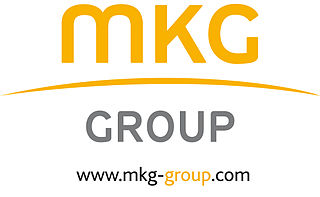Related Research Articles

A hotel is an establishment that provides paid lodging on a short-term basis. Facilities provided inside a hotel room may range from a modest-quality mattress in a small room to large suites with bigger, higher-quality beds, a dresser, a refrigerator, and other kitchen facilities, upholstered chairs, a flat-screen television, and en-suite bathrooms. Small, lower-priced hotels may offer only the most basic guest services and facilities. Larger, higher-priced hotels may provide additional guest facilities such as a swimming pool, a business center with computers, printers, and other office equipment, childcare, conference and event facilities, tennis or basketball courts, gymnasium, restaurants, day spa, and social function services. Hotel rooms are usually numbered to allow guests to identify their room. Some boutique, high-end hotels have custom decorated rooms. Some hotels offer meals as part of a room and board arrangement. In Japan, capsule hotels provide a tiny room suitable only for sleeping and shared bathroom facilities.

Cost is the value of money that has been used up to produce something or deliver a service, and hence is not available for use anymore. In business, the cost may be one of acquisition, in which case the amount of money expended to acquire it is counted as cost. In this case, money is the input that is gone in order to acquire the thing. This acquisition cost may be the sum of the cost of production as incurred by the original producer, and further costs of transaction as incurred by the acquirer over and above the price paid to the producer. Usually, the price also includes a mark-up for profit over the cost of production.
In marketing, customer lifetime value, lifetime customer value (LCV), or life-time value (LTV) is a prognostication of the net profit contributed to the whole future relationship with a customer. The prediction model can have varying levels of sophistication and accuracy, ranging from a crude heuristic to the use of complex predictive analytics techniques.
The organic composition of capital (OCC) is a concept created by Karl Marx in his theory of capitalism, which was simultaneously his critique of the political economy of his time. It is derived from his more basic concepts of 'value composition of capital' and 'technical composition of capital'. Marx defines the organic composition of capital as "the value-composition of capital, in so far as it is determined by its technical composition and mirrors the changes of the latter". The 'technical composition of capital' measures the relation between the elements of constant capital and variable capital. It is 'technical' because no valuation is here involved. In contrast, the 'value composition of capital' is the ratio between the value of the elements of constant capital involved in production and the value of the labor. Marx found that the special concept of 'organic composition of capital' was sometimes useful in analysis, since it assumes that the relative values of all the elements of capital are constant.

Variable costs are costs that change as the quantity of the good or service that a business produces changes. Variable costs are the sum of marginal costs over all units produced. They can also be considered normal costs. Fixed costs and variable costs make up the two components of total cost. Direct costs are costs that can easily be associated with a particular cost object. However, not all variable costs are direct costs. For example, variable manufacturing overhead costs are variable costs that are indirect costs, not direct costs. Variable costs are sometimes called unit-level costs as they vary with the number of units produced.

In business and accounting, net income is an entity's income minus cost of goods sold, expenses, depreciation and amortization, interest, and taxes for an accounting period.

Days Inn is a hotel chain headquartered in the United States. It was founded in 1970 by Cecil B. Day, who opened the first location in Tybee Island, Georgia. The brand is now a part of the Wyndham Hotels and Resorts, headquartered in Parsippany, New Jersey, which used to be a part of Cendant. As of December 31, 2018, Days Inn includes 1,728 locations worldwide with 137,678 rooms.

Contribution margin (CM), or dollar contribution per unit, is the selling price per unit minus the variable cost per unit. "Contribution" represents the portion of sales revenue that is not consumed by variable costs and so contributes to the coverage of fixed costs. This concept is one of the key building blocks of break-even analysis.

In economics, total cost (TC) is the minimum financial cost of producing some quantity of output. This is the total economic cost of production and is made up of variable cost, which varies according to the quantity of a good produced and includes inputs such as labor and raw materials, plus fixed cost, which is independent of the quantity of a good produced and includes inputs that cannot be varied in the short term such as buildings and machinery, including possibly sunk costs.

Candlewood Suites is a hotel chain within the InterContinental Hotels Group (IHG).

An apartment hotel or aparthotel is a serviced apartment complex that uses a hotel-style booking system. It is similar to renting an apartment, but with no fixed contracts and occupants can "check out" whenever they wish, subject to the applicable minimum length of stay imposed by the company.
A hotel tax or lodging tax is charged in most of the United States, to travelers when they rent accommodations in a hotel, inn, tourist home or house, motel, or other lodging, generally unless the stay is for a period of 30 days or more. In addition to sales tax, it is collected when payment is made for the accommodation, and it is then remitted by the lodging operator to the city or county. It can also be called hotel occupancy tax in places like New York City and Texas. Despite its name, it generally applies to the same range of accommodations.
Average Daily Rate is a statistical unit that is often used in the lodging industry. The number represents the average rental income per paid occupied room in a given time period. ADR along with the property's occupancy are the foundations for the property's financial performance.
Revenue management is the application of disciplined analytics that predict consumer behaviour at the micro-market levels and optimize product availability, leveraging price elasticity to maximize revenue growth and thereby, profit. The primary aim of revenue management is selling the right product to the right customer at the right time for the right price and with the right pack. The essence of this discipline is in understanding customers' perception of product value and accurately aligning product prices, placement and availability with each customer segment.
RevPAR, or revenue per available room, is a performance metric in the hotel industry that is calculated by dividing a hotel's total guestroom revenue by the room count and the number of days in the period being measured. However, if the calculation uses total hotel revenue instead of guestroom revenue it equals TRevPAR. TRevPAR is another closely related performance metric in the hotel industry.
Property Management Systems (PMS) or Hotel Operating System (HOS), under business, terms may be used in real estate, manufacturing, logistics, intellectual property, government, or hospitality accommodation management. They are computerized systems that facilitate the management of properties, personal property, equipment, including maintenance, legalities and personnel all through a single piece of software. They replaced old-fashioned, paper-based methods that tended to be both cumbersome and inefficient. They are often deployed as client/server configurations. Today, most next-generation property management systems favor a software as a service (SaaS) model sustained by web and cloud technologies.
GOPPAR is the abbreviation for gross operating profit per available room, a key performance indicator for the hotel industry.

MKG Group is a consulting and market research firm based in Paris, France. The group operates various divisions within the tourism, hotel and hospitality sector, namely monitoring global trends in supply, demand and pipeline growth, including the worldwide chain hotel brand and chain hotel group rankings, as well as conducting specialised industry research for stakeholders, private investors, developers, hoteliers, government and tourism associations, banking and financial institutions, and hedge funds.
TRevPAR, or total revenue per available room, is a performance metric in the hotel industry. TRevPAR is calculated by dividing the total net revenues of a property by the total available rooms.
References
- ↑ "7 Methods for Measuring and Improving Hotel Performance". Amadeus Hospitality. 22 February 2018. Retrieved 17 May 2018.
- ↑ Sunny, Kiran. "Neither revPAR nor occupancy are ideal indicators of hotel profitability – it's all about the ARPAR!". HospitalityNet. Hotelogix. Retrieved 17 May 2018.
- ↑ Vouk, Ira (Mar 31, 2018). REVENUE MANAGEMENT MADE EASY, for Midscale and Limited-Service Hotels: The 6 Strategic Steps for Becoming the Most Valuable Person at Your Property. Ira Vouk Revenue Management Services. pp. 18–19. ISBN 978-1-387-70254-1.
- ↑ "From RevPAR to TRevPAR – how profitable is your hotel?". Customer Alliance Resources. Retrieved 17 May 2018.
- ↑ "ADR, Occupancy Rate, RevPar, ARPar". Quizlet. Retrieved 17 May 2018.